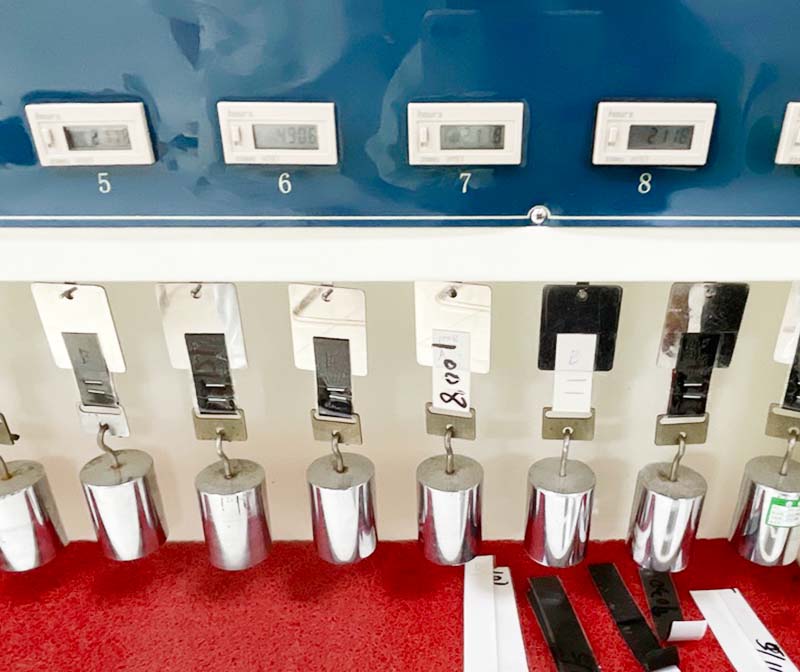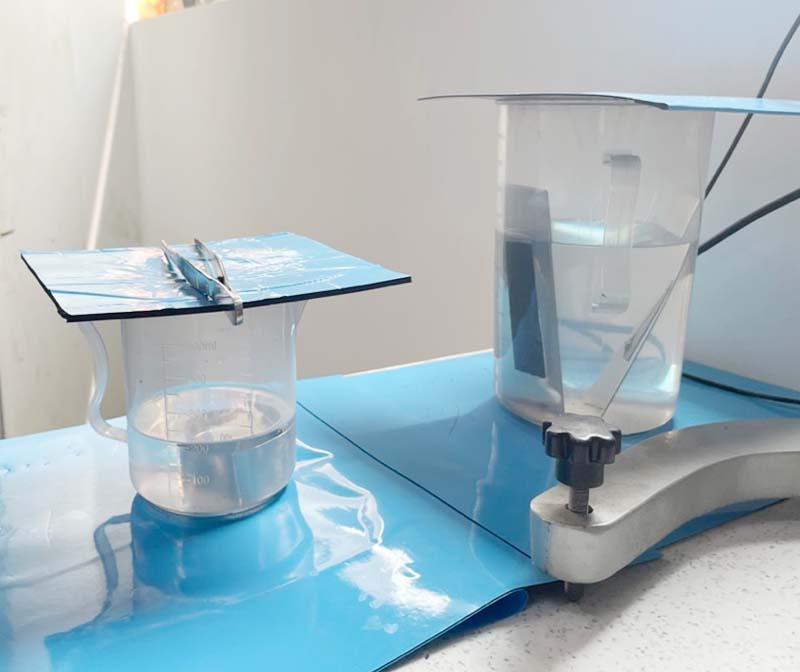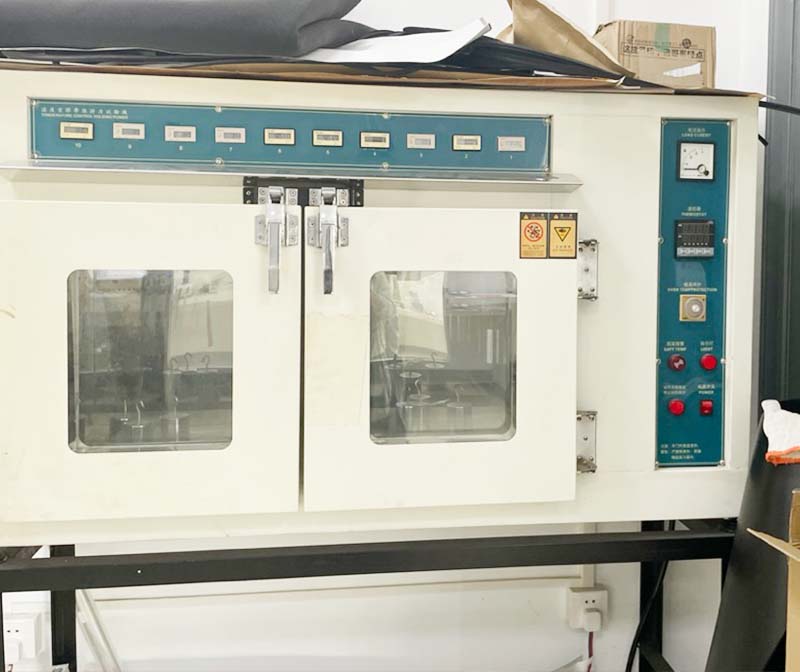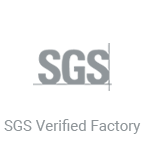Quality Control
Toptape®️ has complete and rigorous testing methods and procedures. Every member of the quality control team has been strictly selected and has more than 10 years of work experience. From raw materials to finished products, Toptape®️ quality control team never misses any details. Good quality lies not only in appearance but also in every innermost part of the product. This is what the Toptape®️ quality control team has always insisted on.

Peel Strength Testing
Peel testing of adhesive and pressure-sensitive tapes is used for quality assurance and provides a means of assessing the uniformity of the adhesion of a given type of tape.

Foam raw material waiting to be glued
The assessment may be within a roll of tape, between rolls, or between production lots. Adhesive properties for tapes are measured using a standard test surface, a specified angle and test speed.

Adhesive Tape Initial Viscosity Test
The initial viscosity of the specimen is tested by the adhesive effect of the adhesive tape on the steel ball by the method of the inclined ball rolling, which has a short contact between the sticky surface of the steel ball and the pressure-sensitive adhesive tape with small pressure.

Tape retention testing
Focus on the static load test, under certain load automatic recording tape to keep time, to confirm the aging of adhesive tape. Cut 1-inch wide strip tape posted on the provisions of the SUS#304 stainless steel plate, the 2kg standard roller to 300mm per minute speed and rolling three times, the steel plate is hung on the testing machine, plus the specified weight. When the tape since the plate after the fall, the timer will automatically retain the test time, used to assess tape adhesion of persistence.

Glue treatment
According to customer order requirements, different substrates and glue materials are used. The advanced roller coating production process makes the glue evenly and fully bonded to the substrate.

Viscosity test at a constant temperature
The test plate affixed with the adhesive sample is hung vertically on the test rack, and the lower end is hung with a specified weight. The displacement of the adhesive sample after a certain time, or the time the sample completely separated, is used to characterize the ability of the adhesive sample to resist pulling out. (as shown in the picture)





